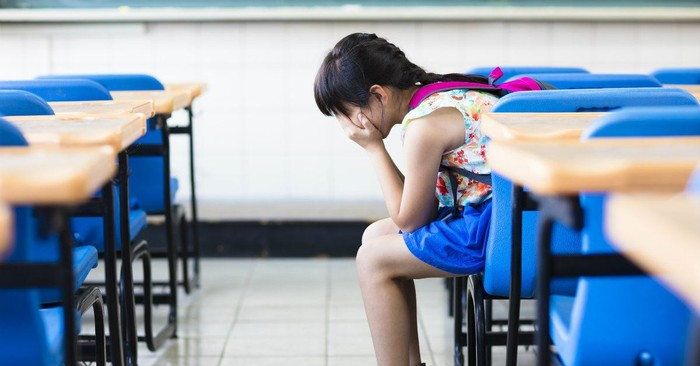
The desire to protect our kids is in our hardwiring. From the moment we become a parent, our senses go on high alert, ready to pounce on looming trouble. But no matter how hard we try, there are troubles from which we can’t shield our kids. Sicknesses, disappointments, and damaging emotional and mental tendencies come even to bubble-wrapped kids with parents hovering above in helicopters.
Parents of anxious children know this is true. If your child suffers from anxiety, you know it’s a thief of joy.
Anxiety can:
- Change a child’s behavior
- Steal their peace
- Bring chaos to a home, and
- Impede learning
And though it’s increasingly common in kids and teens, the desire to protect our child’s privacy compounds anxiety’s impact. Whether your child has been clinically diagnosed with anxiety or suffers to a lesser degree, take heart, because hopeful progress can be made.
These ten suggestions aren’t a cure for anxiety, but they might move your family toward healing.
1. Intentionally Pray
We sometimes say, “I don’t know what to do except pray.” Well, yes. Activate your most powerful weapon and pray your guts out.
- Teach your child to pray over things that worry them.
- Find verses to pray that speak to peace and against their fears.
- List answered prayers in a journal to look back on and remember God’s faithfulness.
God can indeed heal your child of their anxiety, so pray along those lines, but he also sometimes allows us to walk through hard things, including anxiety. Spend some time listening for his voice. What might he be saying to your family as you battle anxiety?
That said, do be sensitive to the pressure kids might face to “pray away” their anxiety. For some, when they pray, yet their anxiety remains, they feel shamed or forgotten.
2. Don’t Try to Avoid All Anxiety Triggers (It Only Validates Their Worries)
When we sense danger for our kids, we naturally swoop in as momma and poppa bear. If we could, we’d hold them protectively away from all the harm and hurts of the world.
Without realizing it though, we've saved them in the moment, but added more fuel to the anxiety. Avoiding their triggers sends a message that those were valid worries after all, worthy of avoidance.
Averting anxiety doesn’t make it go away. Rather, it shoves it downhill like a building snowball.
If a child sees a bee in the backyard, fearing a sting, they might not want to play under those same backyard trees again. If we accommodate that fear, they might then decide to stay off the grass altogether. In the end, they might beg to remain inside.
Social anxiety might begin to take away a child’s willingness to go to school. But if we accommodate by allowing them to stay home, we reinforce that there are people we should avoid or hide from. A message is sent that school is to be avoided and facing what’s hard is a reckless choice.
When we make accommodations for our child’s anxiety, it takes up more ground in their minds.
3. Teach and Model Healthy Coping Techniques
Can your child distinguish between healthy and unhealthy coping skills? We can’t assume that they know how to calm down. Teach and practice helpful techniques such as:
- Tensing and un-tensing the body from toes to forehead
- Praying
- Getting rest
- Calm music
- Essential oils
- Sitting under a weighted blanket
- Time in a designated, quiet, calm spot with sensory toys, noise-canceling headphones, etc.
More active coping techniques include:
- Journaling
- Drawing fears
- Exercise (walks, trampoline, etc.)
- Seeking time in the sun
After discussing and practicing these, model them for your child in your stressful moments. Then brainstorm a list of unhealthy coping techniques such as eating, lying, or technology distractions.
4. Therapy
If your child is suffering from anxiety, consider counseling. “We’ve got this,” is not always a healthy way to cope. Placing value on therapy is a positive step rather than a weak one. It takes courage to surrender to the need for outside help. Sharing vulnerabilities is a brave and healthy step toward healing. Communicate to your child that mental health can be fought for.
5. Teach Emotional Awareness
Anxiety shows up as anger, panic, masking, or withdrawal. Give your child words for feelings. Teach them that God designed us with the capacity to experience all manner of feelings, and all are valid. Download Gloria Wilcox’s Feelings Wheel and post it in your home. Ask your child to grab the wheel and share a few emotions that they’ve felt recently. It takes practice to accurately identify feelings. Becoming more honest and aware of emotions releases pressure and sheds some healing light.
Make Space for “Bad” Emotions
With good intention, we teach kids kindness and manners and punish them for angry outbursts. In the process, we deem certain emotions as bad. Kids learn that it’s wrong to be angry.
Hard feelings aren’t bad though and don’t just go away. They keep growing even when tucked away.
Let’s teach our kids how to handle darker thoughts effectively and respectfully. For kids with anxiety, this frees them to express the feelings they are trying to manage.
6. Help Reground Your Child’s Racing Mind
Anxious kids’ minds race with a furry of worries, and they need help returning to the here and now.
Our brain’s amygdala creates our emotional responses, like fear. It switches on physical responses, such as a raised heartbeat, shallow breathing, etc. Though helpful in emergencies, it can create cycles of anxiety. By refocusing us on the body, grounding techniques take us out of our thinking.
Here Are Different Grounding Techniques to Try with Your Child:
- 4-7-8 deep breathing (breathe in through nose for 4 seconds, hold for 7, exhale through the mouth for 8 seconds)
- Spend time in a calming chair/spot with a sensory toy
- Choose something in the room to study in detail. What color is it? Texture? Weight? Design? Material made of? Uses?
- Ask them to help you do everyday tasks. Have them help you cook, have them brush their teeth, pick up their laundry, etc.
- Practice the 5-4-3-2-1 technique:
- Name 5 things you can see
- 4 things you can feel
- 3 things you can hear
- 2 things you can smell
- 1 thing you can taste
7. Teach You Child Mindfulness
Our kids can deal with unwanted anxious thoughts by learning to let them come and go. Urging kids to “not think about it” will cause thoughts to swirl even more. In practicing mindfulness, the goal is to be still and focused, allowing the anxious/upsetting thoughts to come. Then walk your child through imagining them moving out of their head, like drifting clouds without guilt. With this approach, kids learn to build a buffer between thought and reaction.
Mindfulness can also be practiced prayerfully. Discuss awareness of outside thoughts that come while praying. Those can be acknowledged and let go. Practicing mindfulness might feel silly, but it settles the mind and practices an invaluable coping skill.
8. Help Your Child Learn the Difference between Facts and Anxious Feelings
Teach your child the ability to sort through anxious feelings. Practice with worried thoughts outside of anxious moments. Write out what part of the worry is fact and what part is a feeling. Help them look for evidence of the difference.
9. Invite in Other Voices into Your Child’s Life
Invite in mentors, counselors, therapists, and adults who have anxiety but are coping in healthy ways. Look for others willing to build into your child.
10. With the Help of Professional, Consider Medicine
Medication is also something to consider and pray over. There are lots of strong opinions on this, so I encourage you to listen for the Father’s voice. Maintain grace and openness and avoid stigma. Advocate for your child in all the ways you feel led.
Empower Your Child
We don’t have to bubble wrap our kids or shield them every hard thing they might face. Instead, we can empower them to be capable of facing hard experiences and emotions. Anxiety can be all-consuming if we let it, but we can demonstrate the value of mental health.
Our kids don't have to be victims. Take heart. Childhood can be fought for.
John 16:33 (NIV): I have told you these things, so that in me you may have peace. In this world, you will have trouble. But take heart, I have overcome the world.”
Image Credit: ©Getty/Tomwang112







